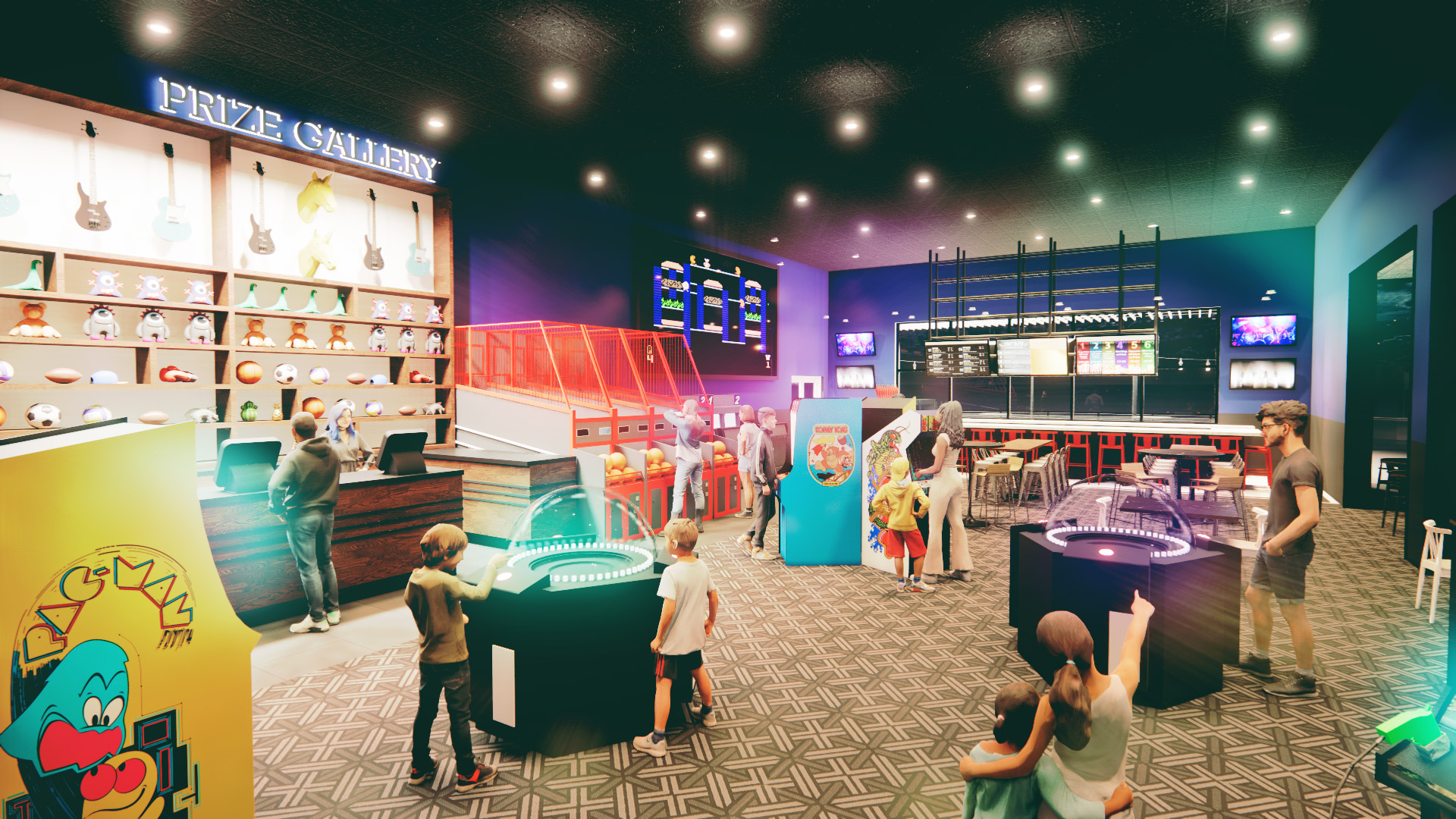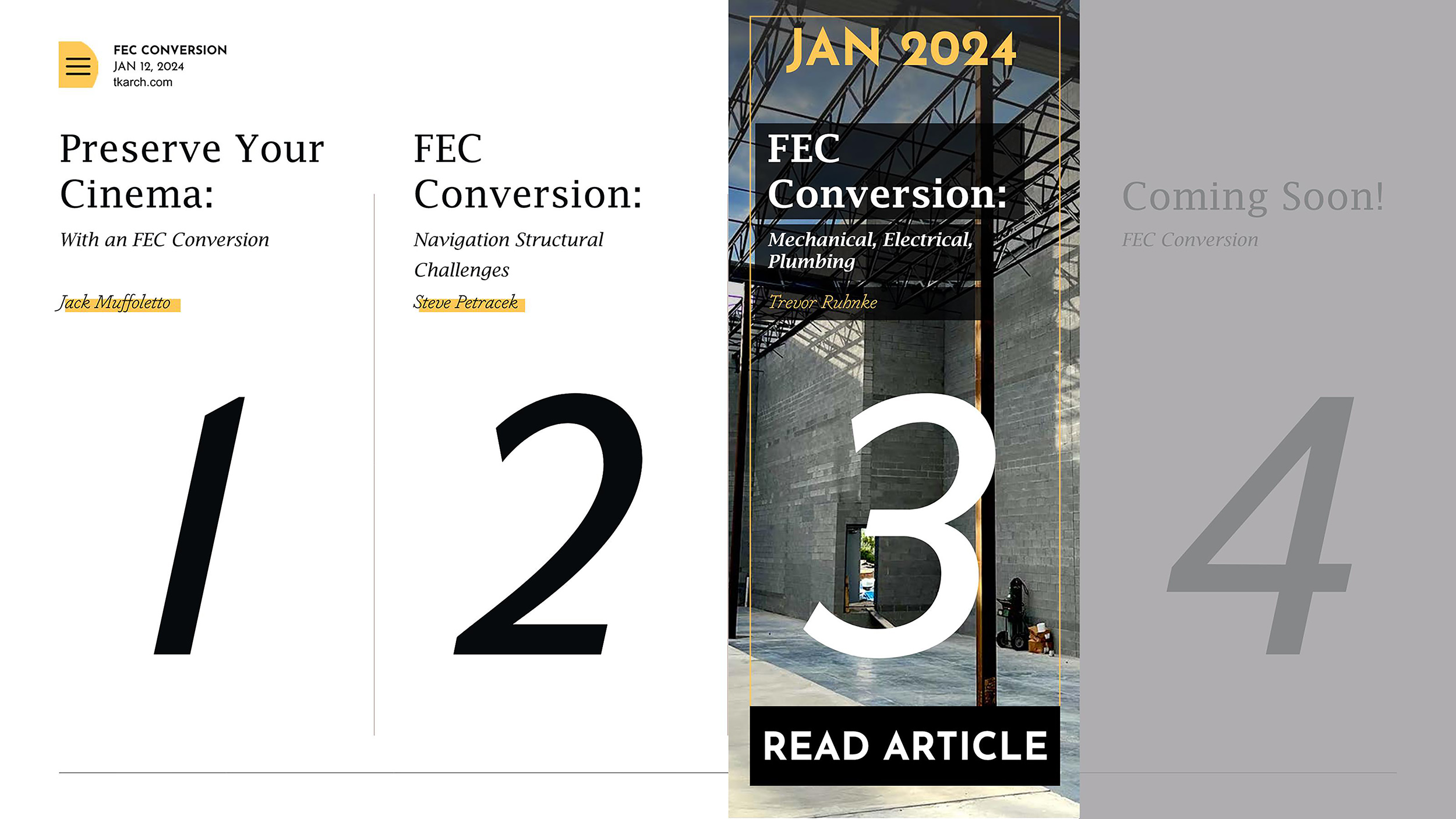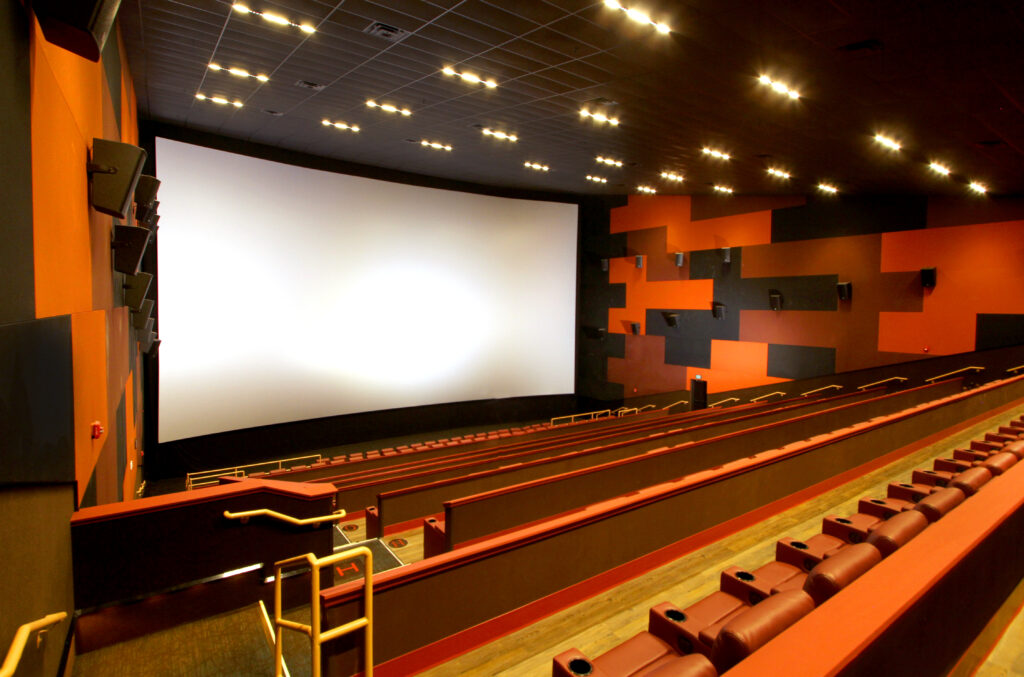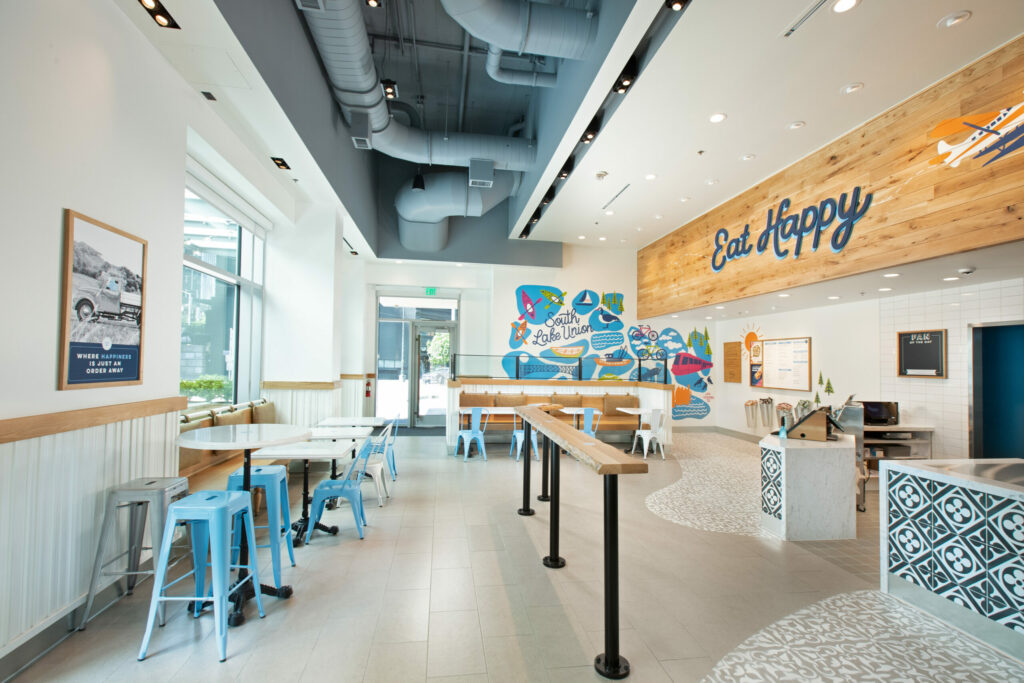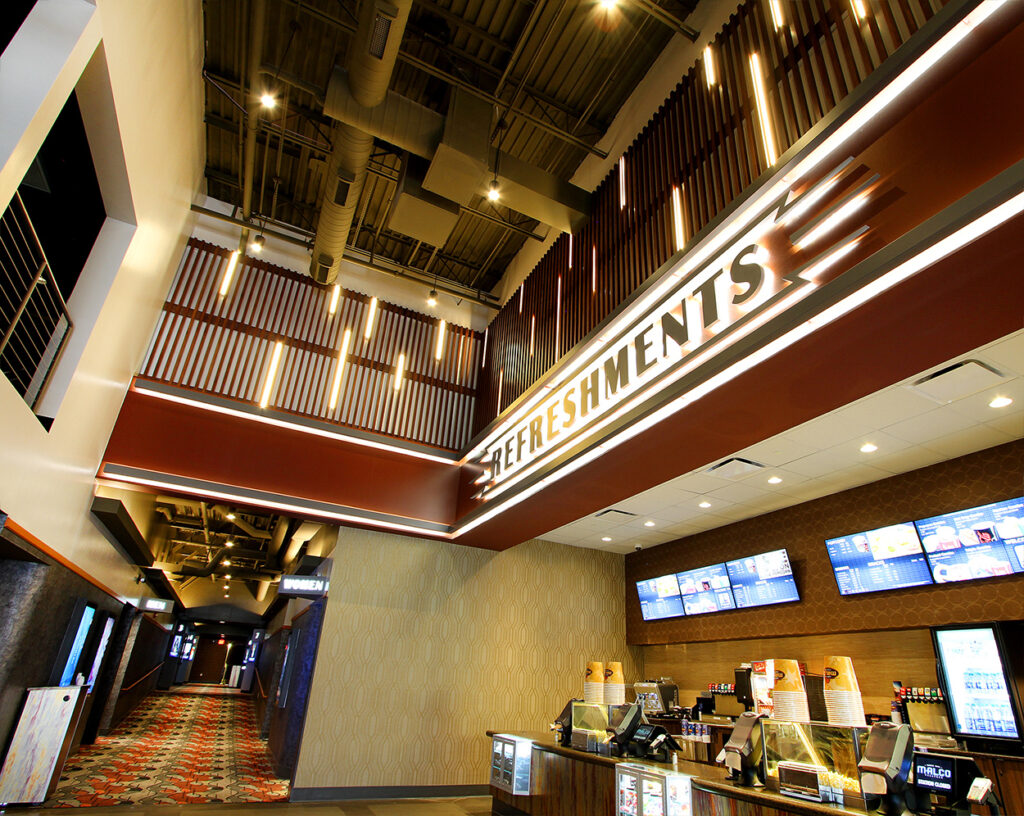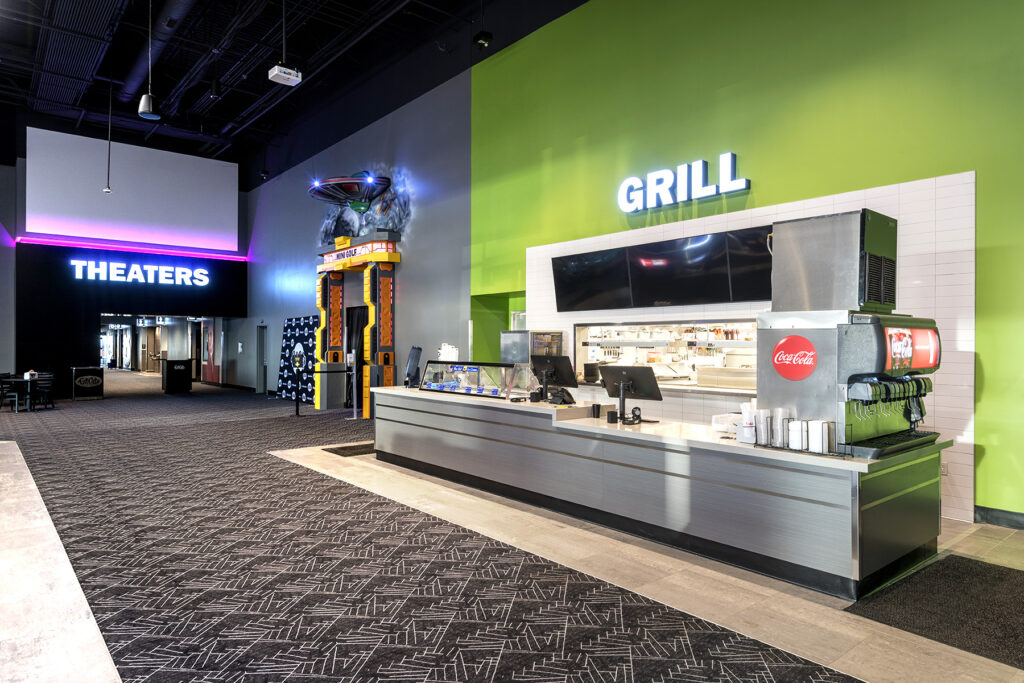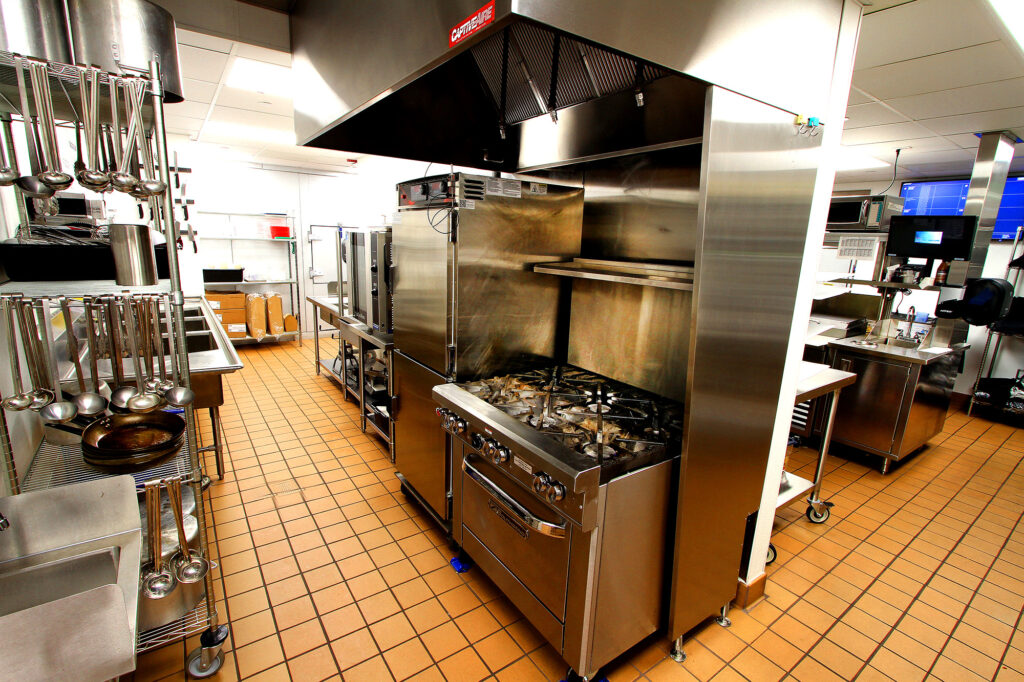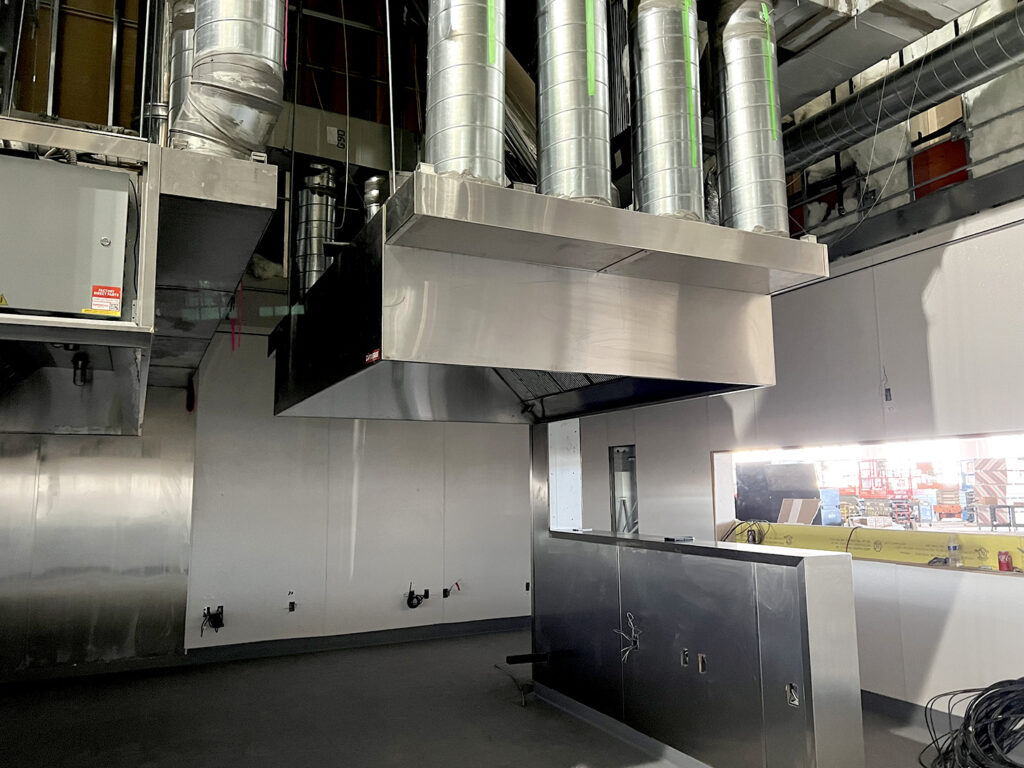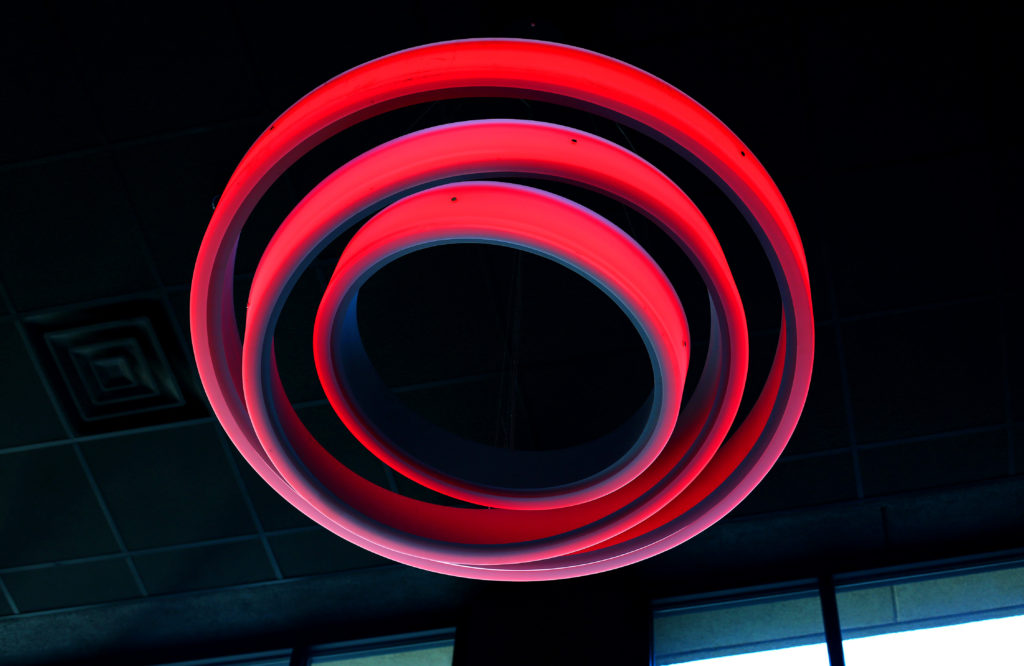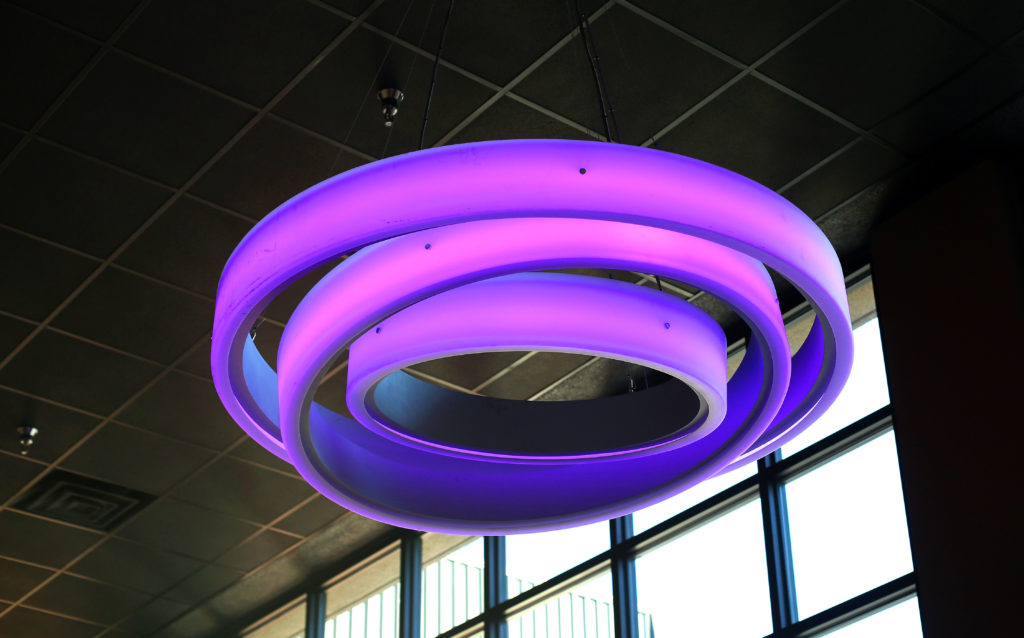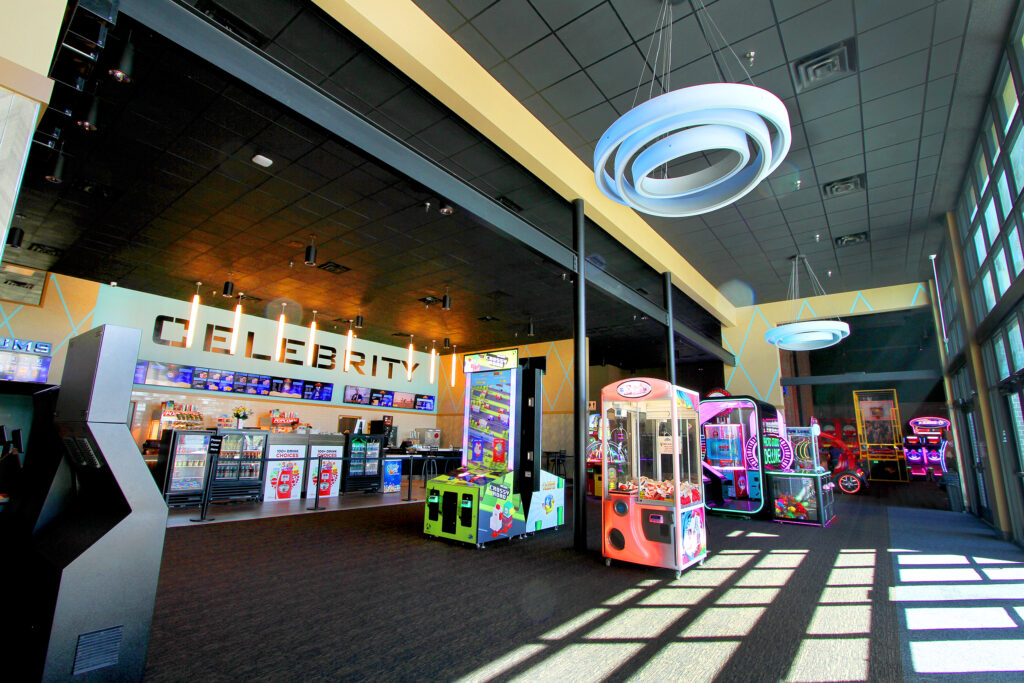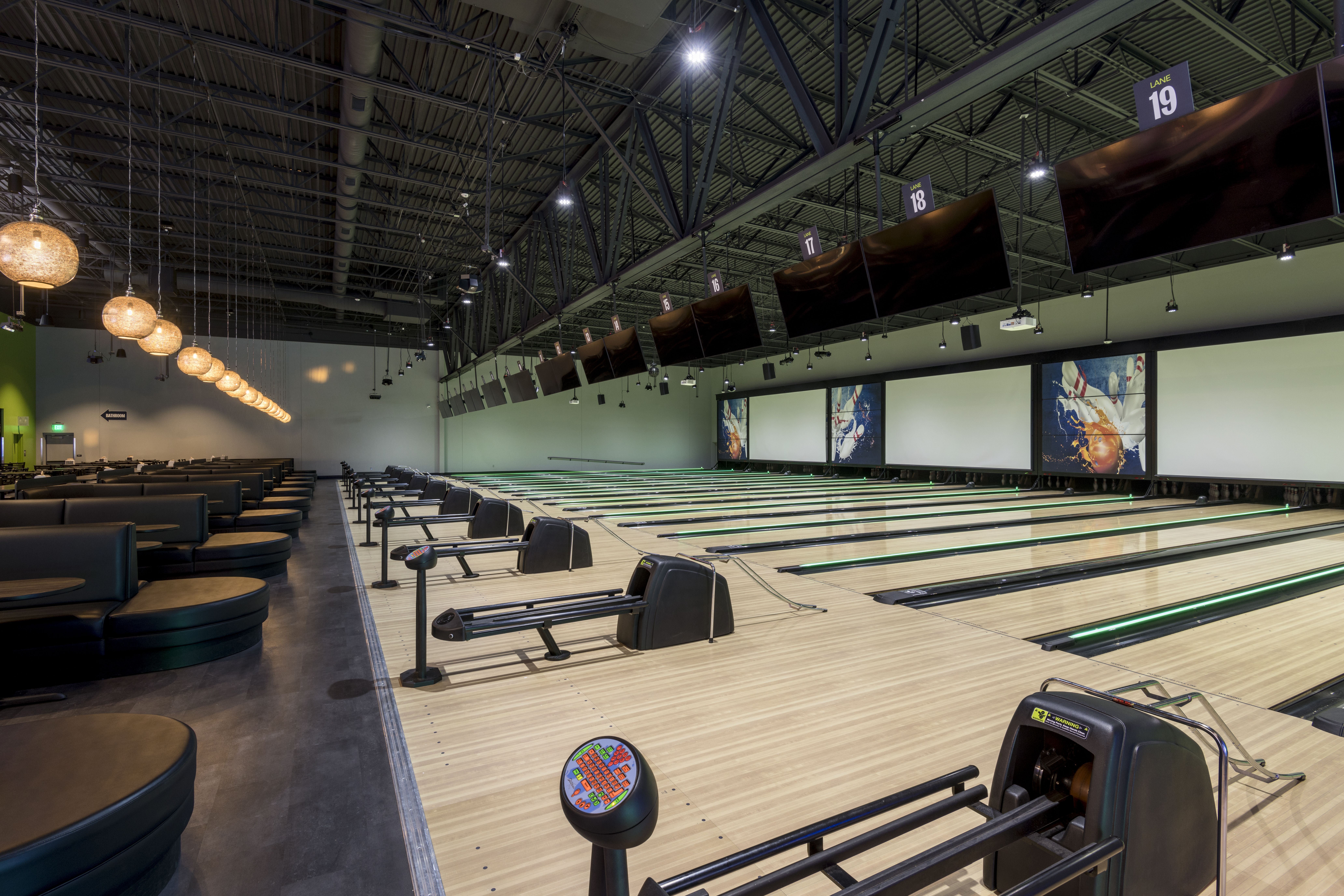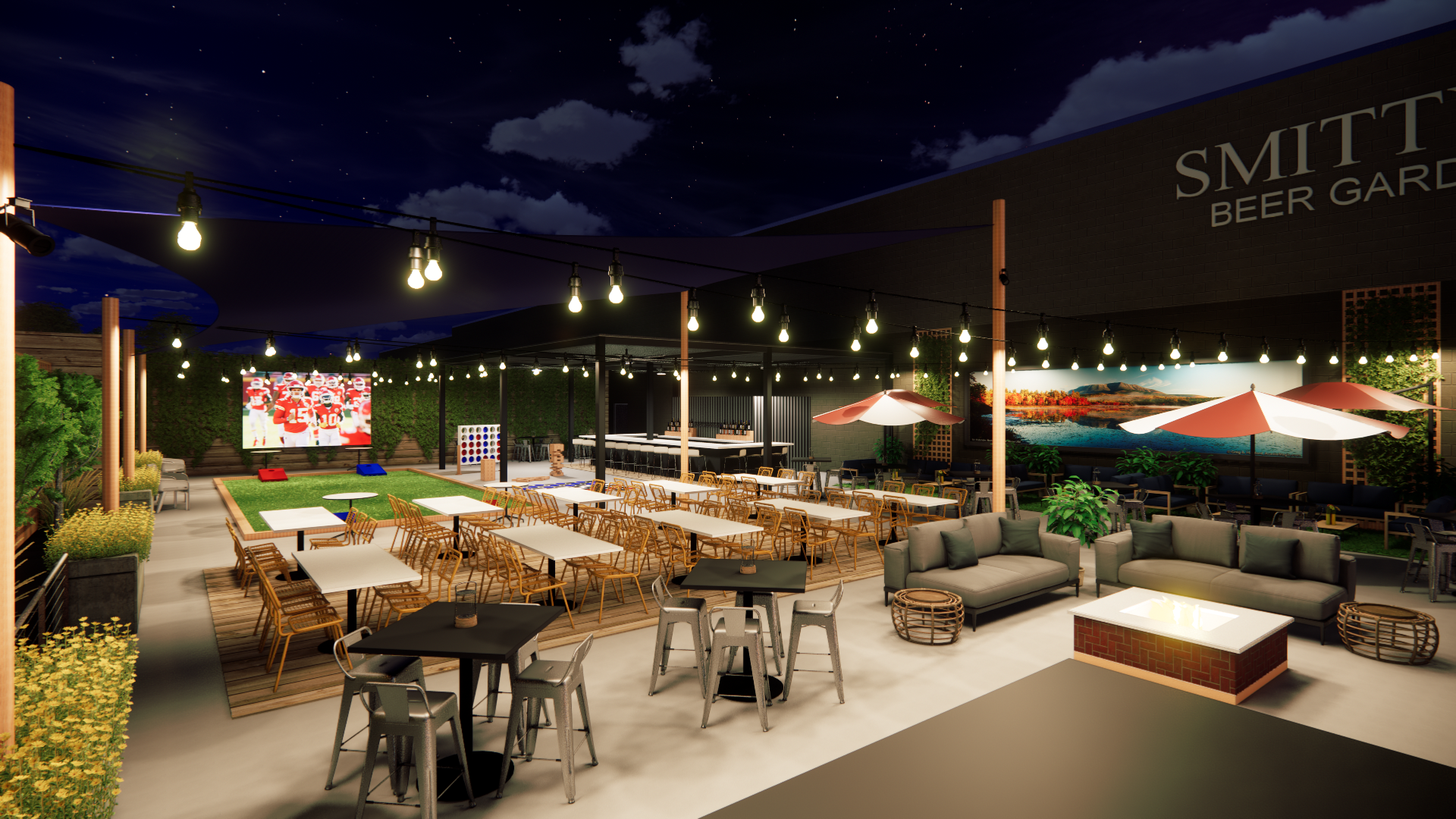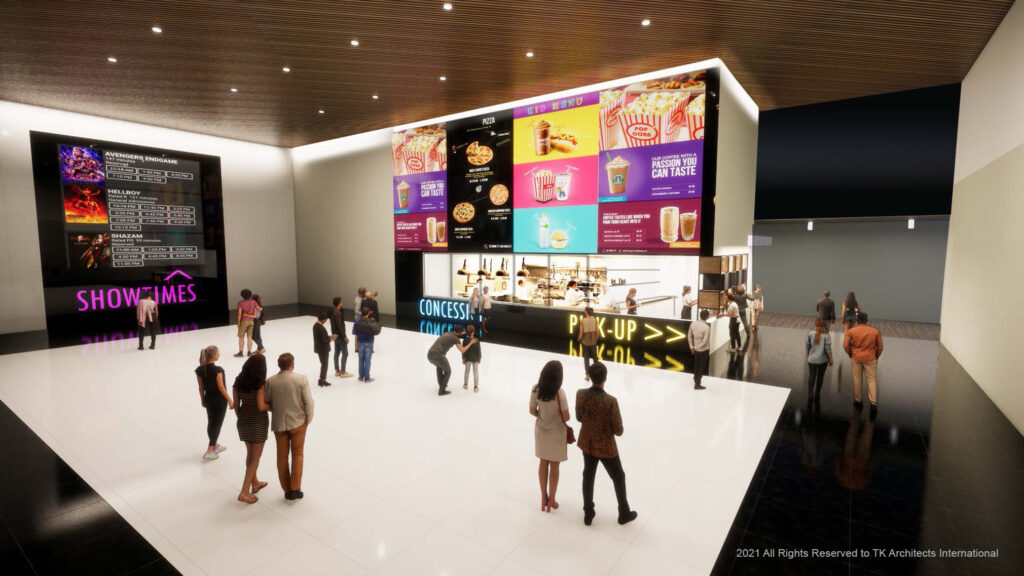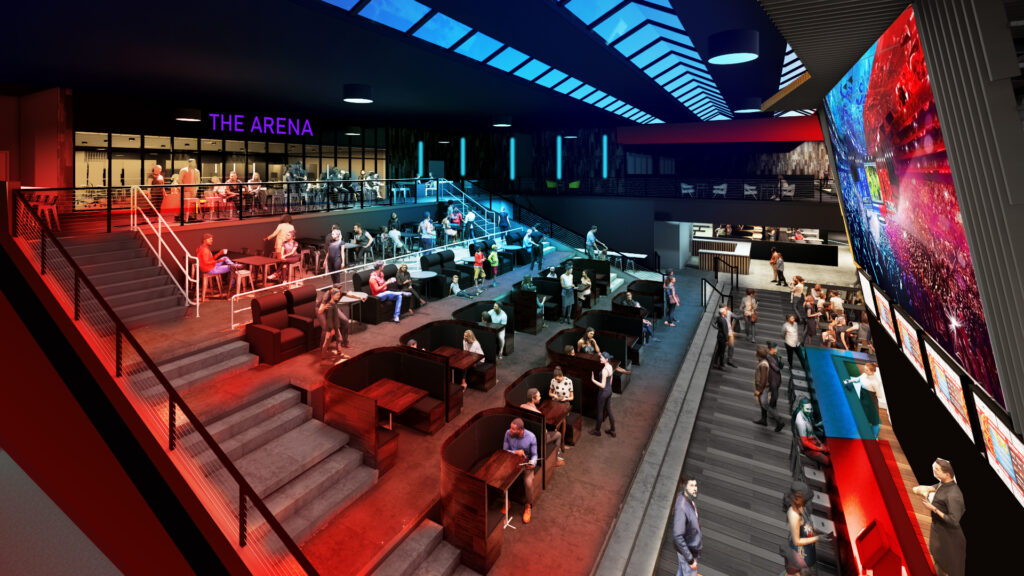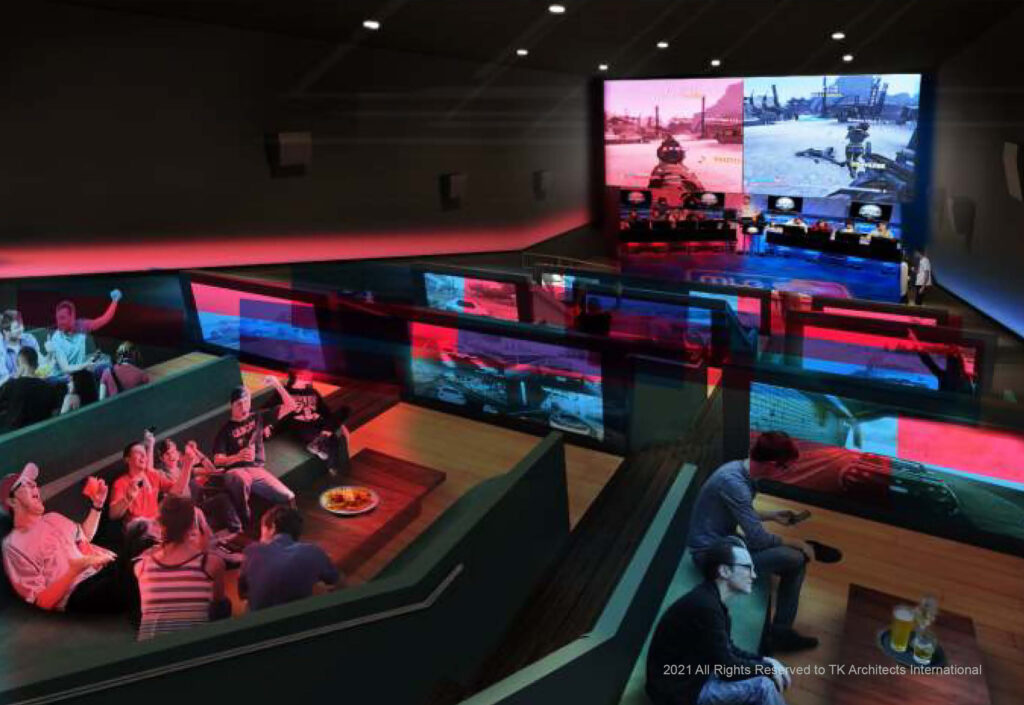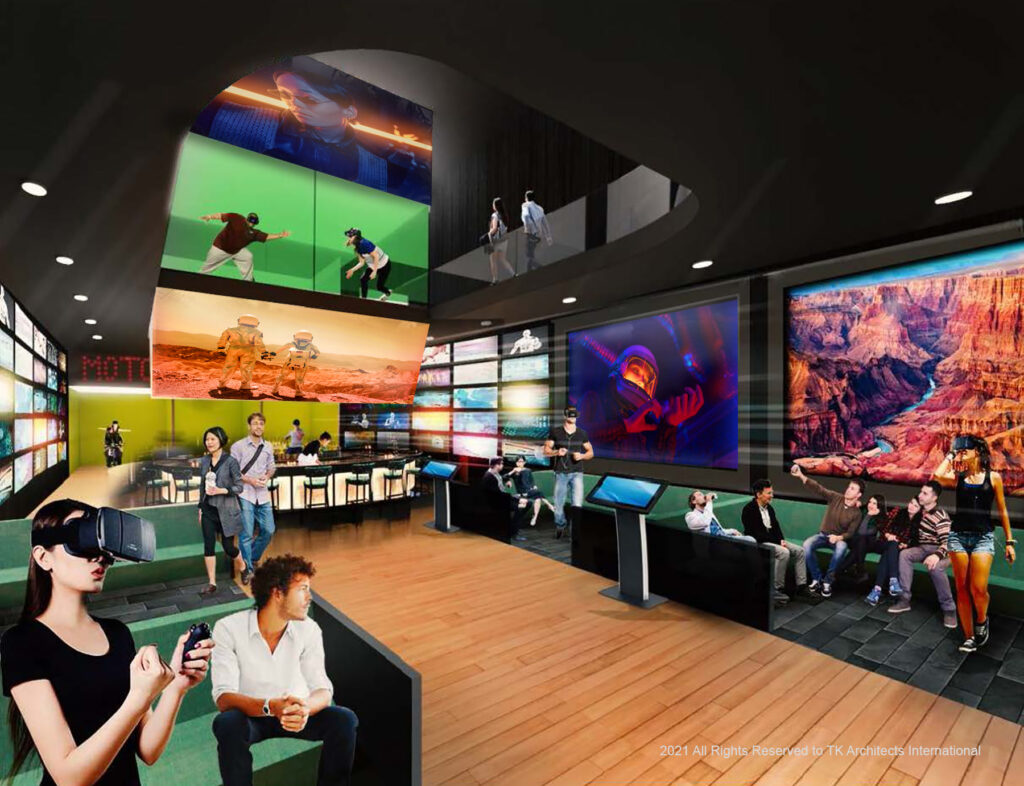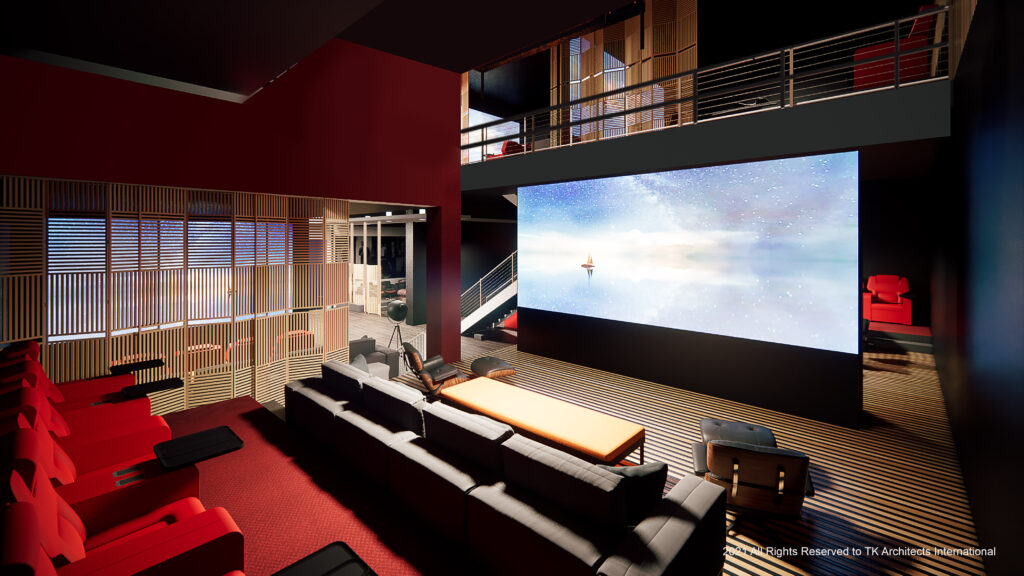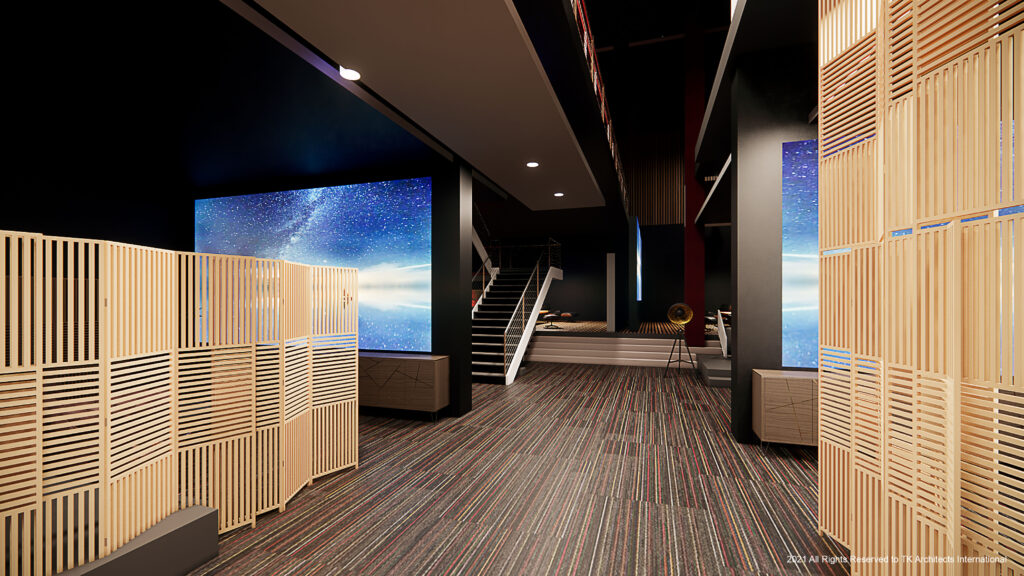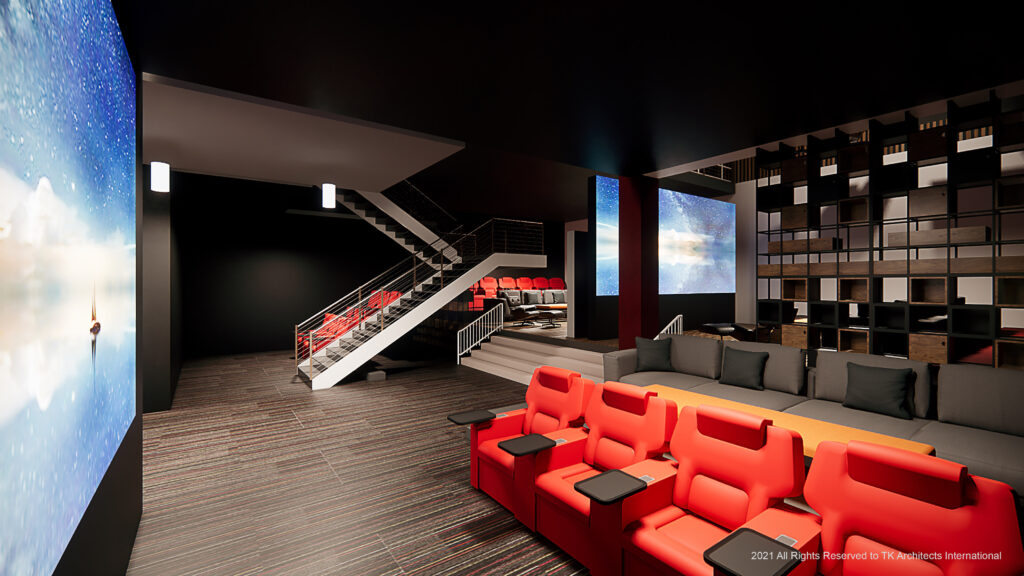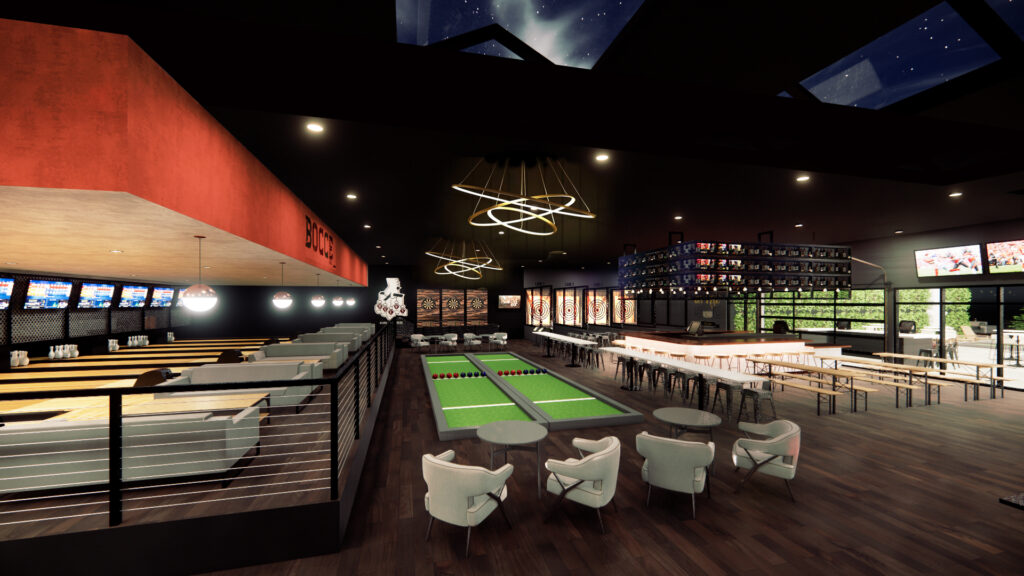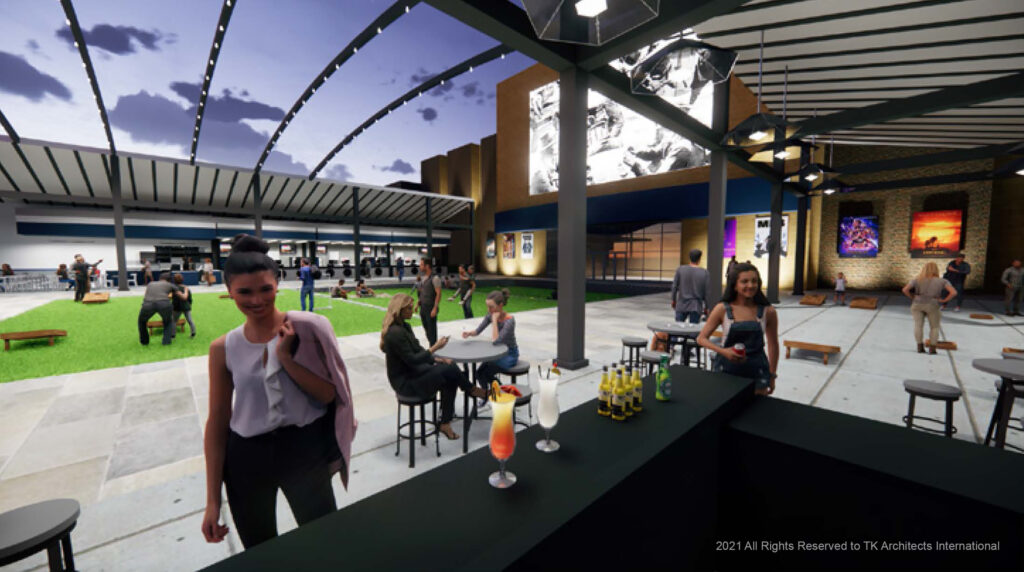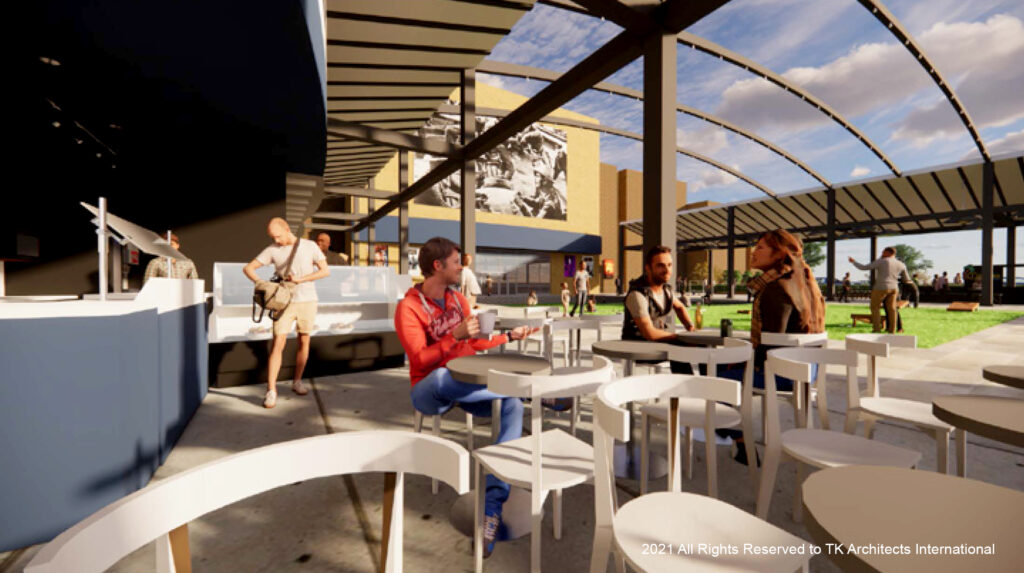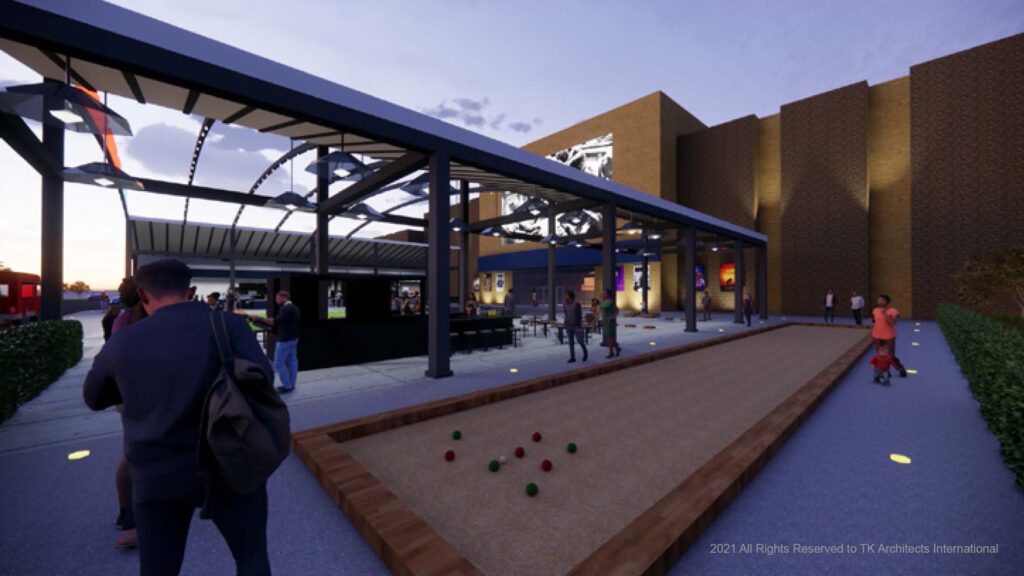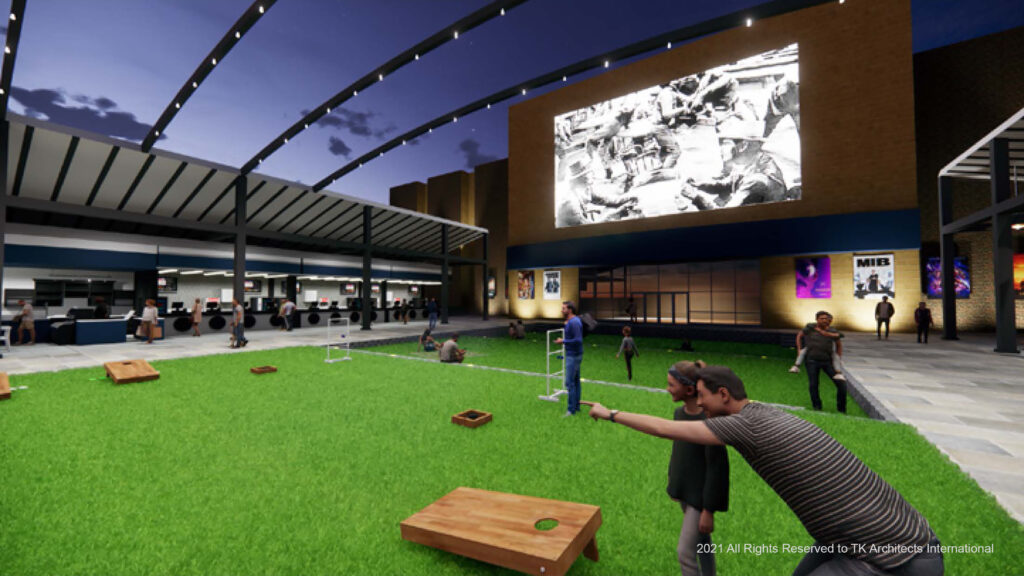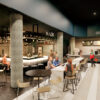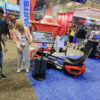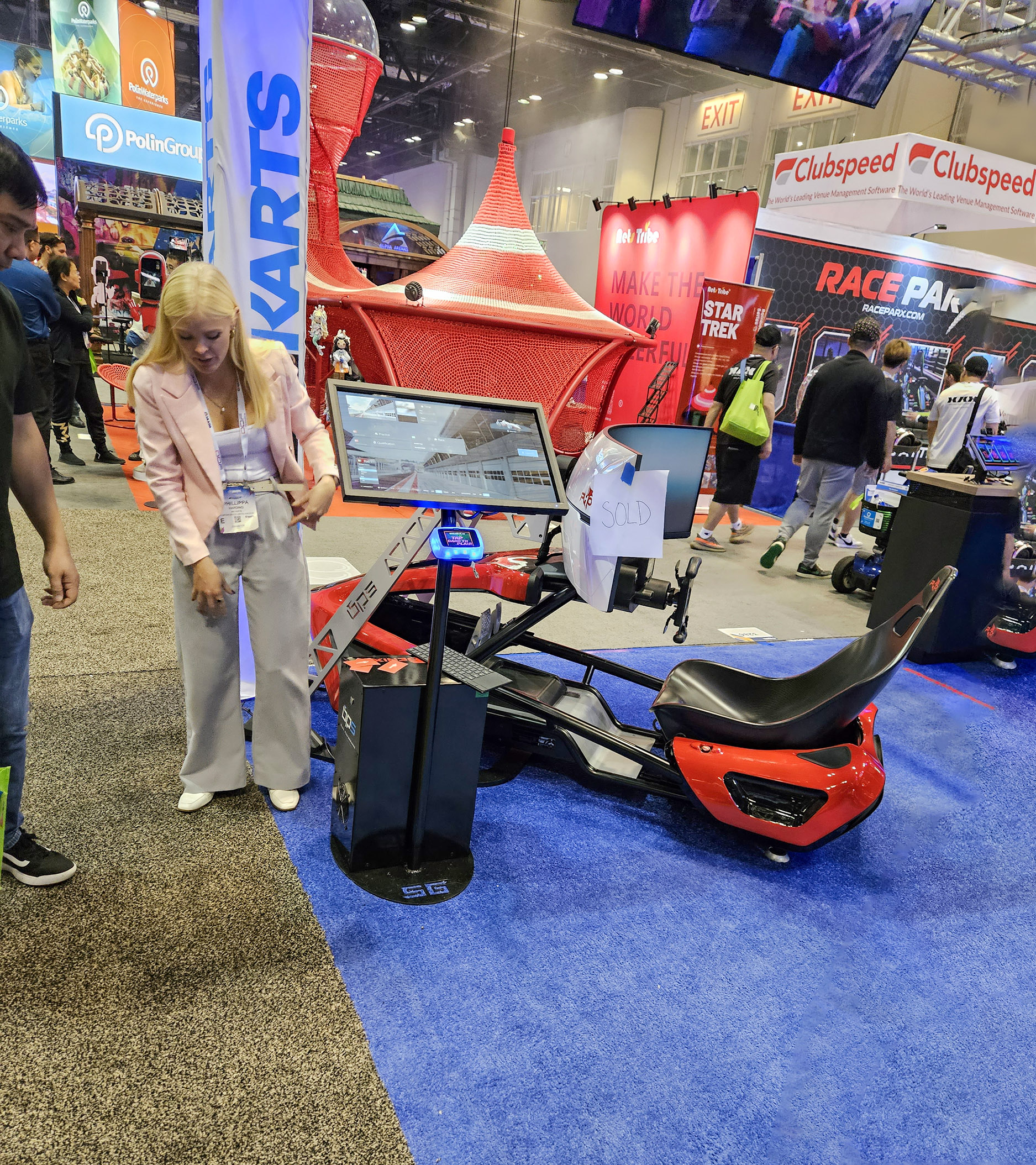
May 2024
by Theresa English, Principal
Not your Grandpa’s Bowling Alley
We started this series with a broad overview of why entertainment centers are important (LINK). Chapter 2 brought you insights from the structural aspects (LINK) and Chapter 3 followed up with factors to consider from the MEP Engineering perspective (LINK). Now I want to bring this series to a close with the thread that ties all the components together—learning and networking through entertainment focused trade shows.
TK Architects has been designing entertainment complexes since our founder’s early days as a solo practitioner. In fact, indications amongst exhibitors predicting entertainment’s relevance in the evolution of cinemas started long before Covid. A worldwide pandemic crystalized the need for change to maintain the longevity of cinemas and to provide exhibitors a chance for income independent of the studio’s content supply stream. The time is here, and more and more exhibitors are seeing the benefits and rewards of adding entertainment to their mix.
Bowl Expo
In recent years, the variety of amenities available for exhibitors/operators have significantly expanded. The appeal to clients is as diverse as the amenities. By participating in Bowl Expo, we were able to see clients’ reactions in real time. I was not prepared to walk into the trade show hall and discover full bowling lanes set up as part of a trade show booth (little did I know what was in store for me later in the year). Numerous booths interspersed throughout showcased everything needed to run an entertainment center. There was ample networking and idea-sharing about the future of entertainment. Surprisingly, there were fewer Food & Beverage booths than I expected. Overall, it is a great show I would recommend to anyone interested in bowling and entertainment.
IAAPA
Last Fall I went to IAAPA in Florida. IAAPA encompasses a wide range of attractions, including entertainment centers, water parks, amusement parks, haunted houses, and arcades. Walking in was quite an experience; imagine the size of six CinemaCon trade show floors combined into one room. Despite the expansive floor plan laid out before me, I still had to zoom in with my phone to read the names of individual vendors in each booth (thank you, guys, for color-coding the floor plan and the carpet).
There’s even an outdoor component featuring amusement rides, but the continuous rain throughout the week, unlike the typical 20-minute Florida afternoon showers, made viewing them a challenge. Some of the smaller rides are indoors, and the arcade games are set up free to play. We got to check out some of the latest arcade attractions and hot new games. Operators made sure to bring their official game testers –the kids!
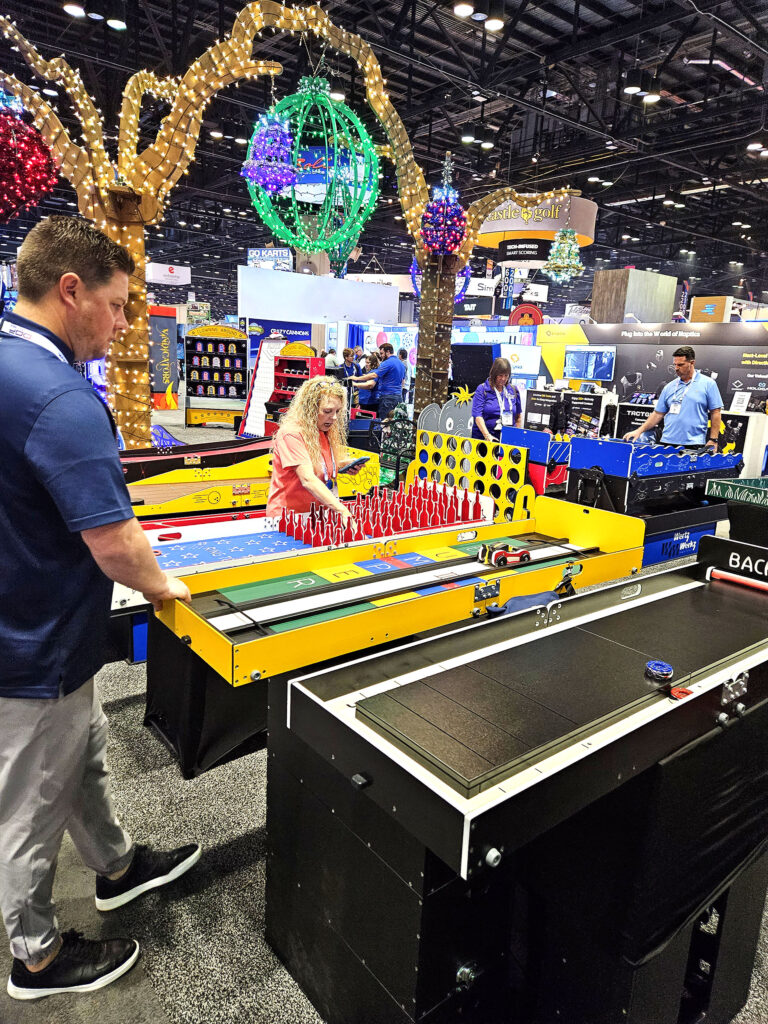
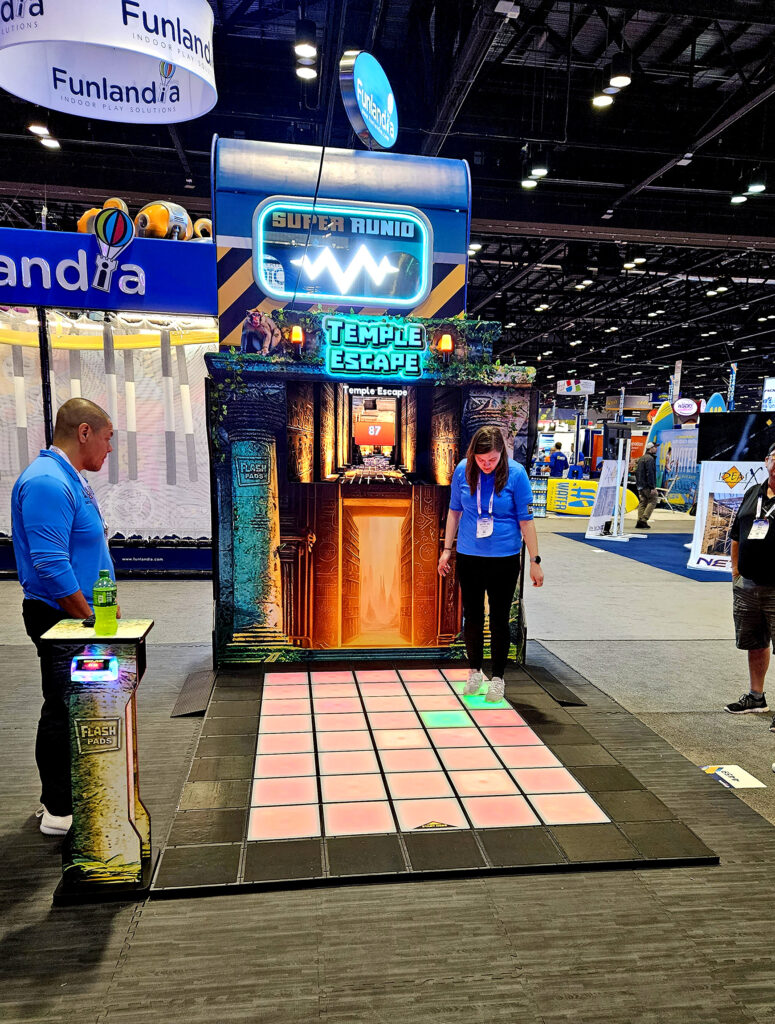
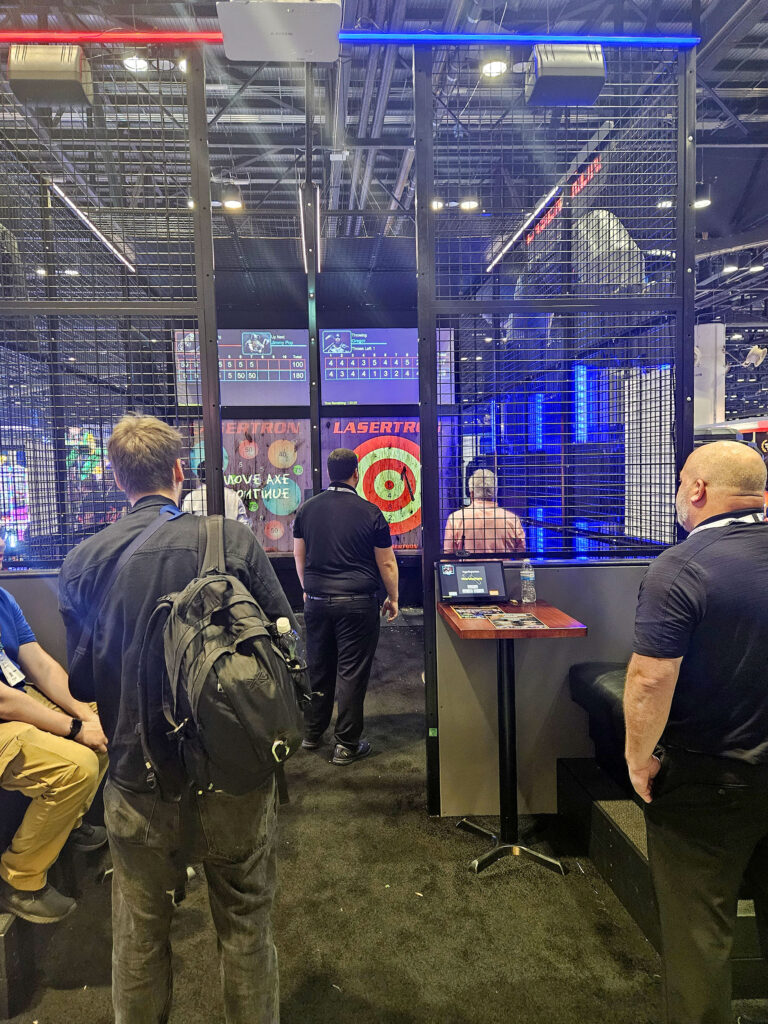
With a couple days to explore I was able to see different aspects of the show:
- Racing sims were a pretty hot topic this year and the variety of sizes and types of screens they come with equally varied.
- I witnessed a captivating water and laser show that could potentially be used for queuing purposes.
- Complete bowling and duckpin lanes, including demonstrations of how hard it is to really tangle the string setters.
- Roller coaster cars being unveiled.
- Flying sims require fans and some crazy looking gear.
- Arcade games both coin and redemption of all types and styles for every age. Even a claw game for mini-booze.
- Baseball, golf, soccer, cycling and football virtual reality or sims if your guests are looking for something more active.
- I got to go on my first dark ride, an immersive 3D experience with motion seats and gaming interaction. The motion seats were powered by a familiar name from the cinema world—DBox.

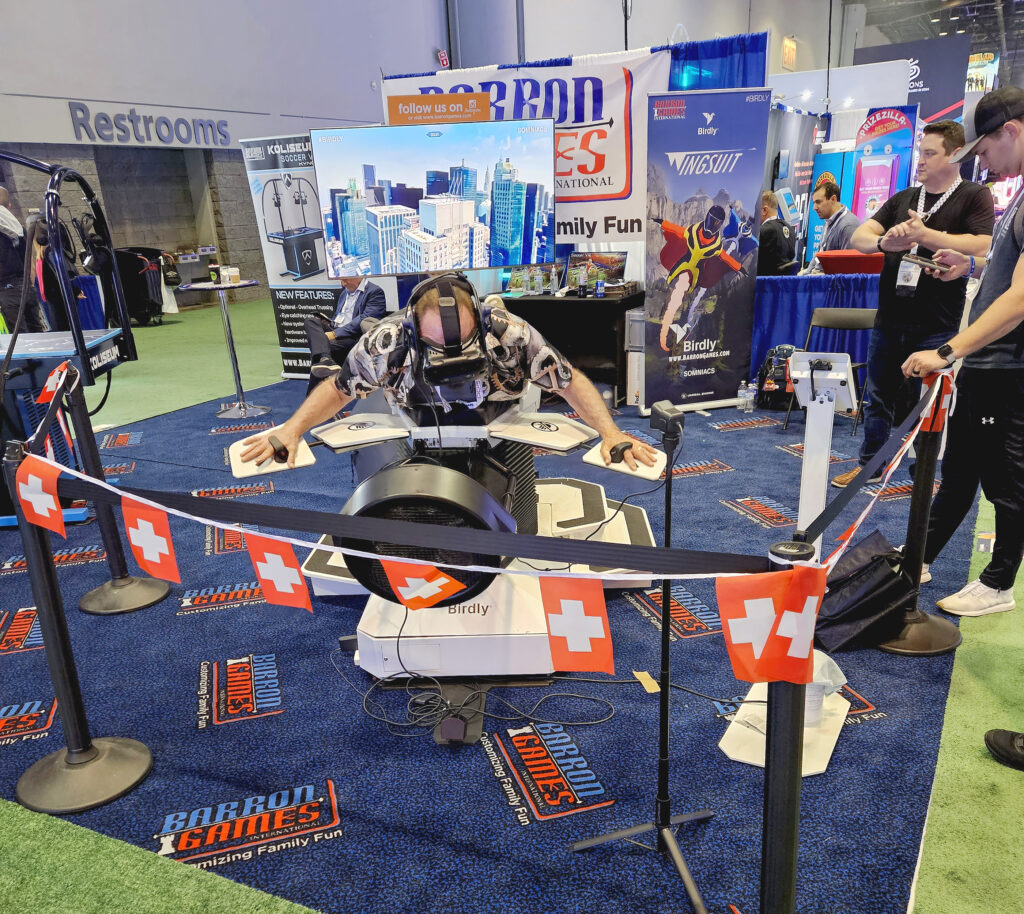
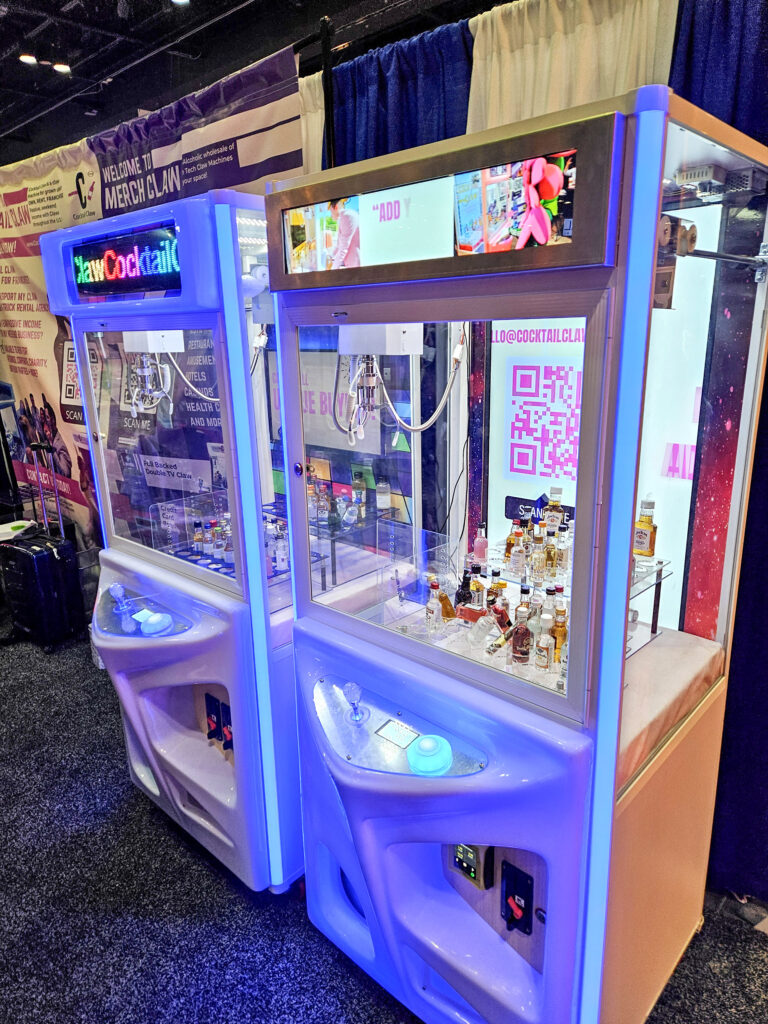
Networking
Familiar faces at booths of vendors we already work with both in cinema and entertainment were a pleasure to encounter. Seeing new products and discussing potential use was thought-provoking. Walking with clients to see what was intriguing to them and hearing why they wanted to know more about a particular amenity or attraction was illuminating. Experiencing the massive trade show that is IAAPA should be on everyone’s entertainment bucket list but be sure to pack your most comfortable shoes!
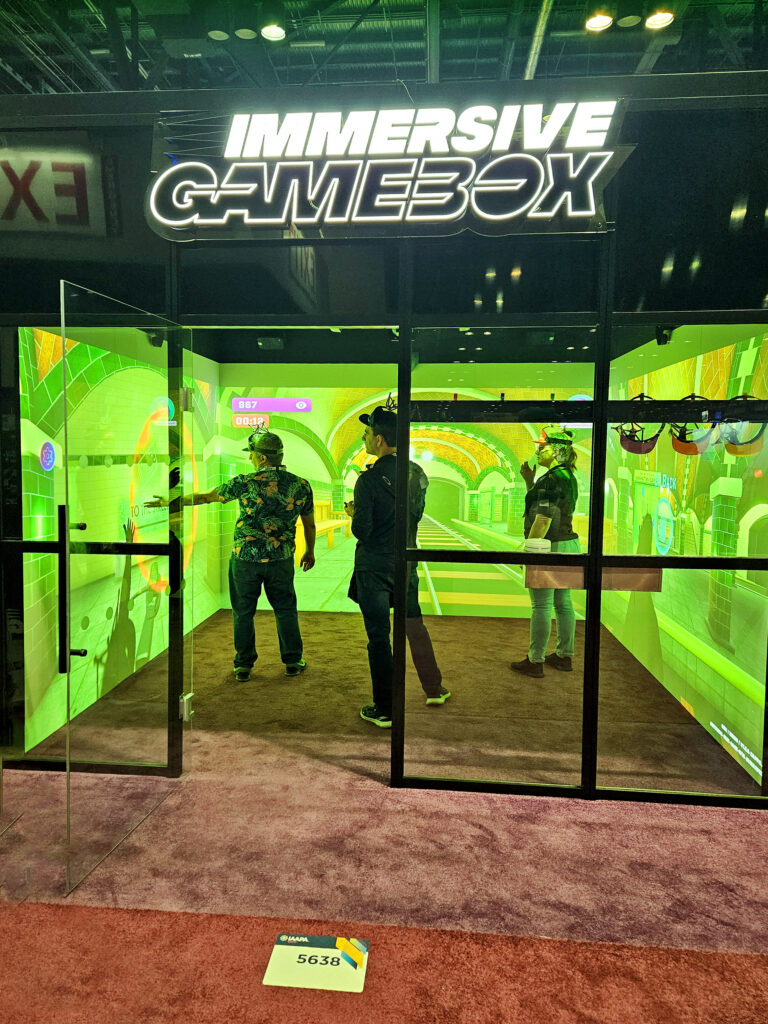
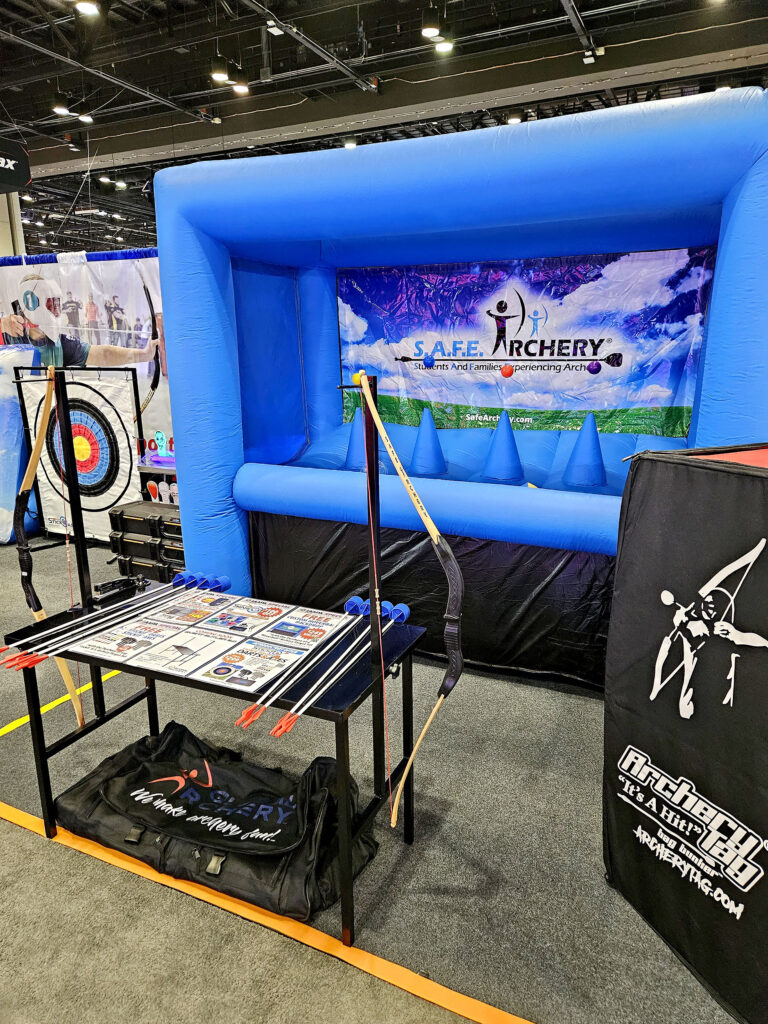
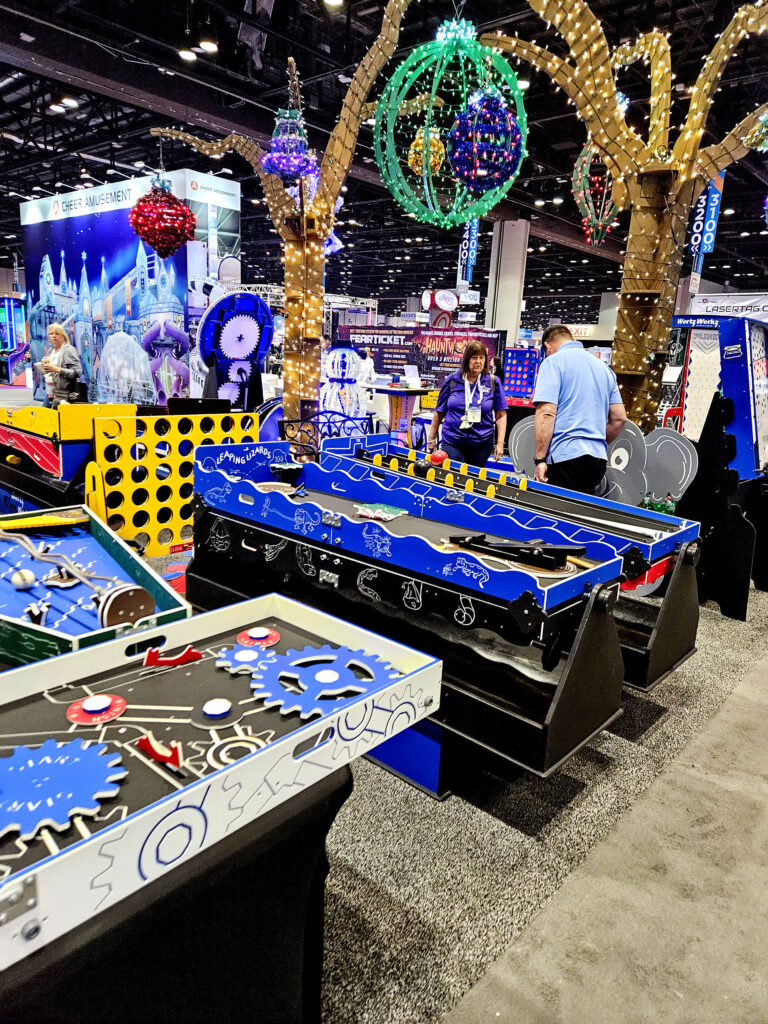
Dine-In Cinema Summit
As we reflect on the past year, it’s evident that TKA cultivated an exceptional journey filled with new experiences in the entertainment sector. We have witnessed the continuous growth and integration of the entertainment side of the business. We anticipate this integration to expand steadily, merging with other aspects of cinema experience. In fact, Dine-in Cinema Summit has added a day designated to discussing entertainment centers! I had the opportunity to share with fellow architects and general contractors some of the construction costs associated with entertainment centers at Dine-In.
CinemaCon
The conversation continued at CinemaCon this year where I was able to participate in a panel hosted by the International Cinema Technology Association. Each panelist shared different pieces of the puzzle of what it means to put an entertainment center together. Whether for new construction or renovation projects, participants shared wonderful information for the attendees.
Conclusion
We are so excited to engage with an increasing number of owners on the intersection of cinema and entertainment. Exploring the potential for designing distinctive and personalized experiences at that intersection is thrilling. Additionally, we are delving back into what standalone entertainment entails. Whether, you are just starting your entertainment journey or refining your path, we encourage you to reach out to us!
What’s next?
We are looking forward to another Bowl Expo coming up in July, this year in Denver Colorado. Conference is June 29-July 3rd, Trade Show is July 1st and 2nd. This time we will be sharing a booth with our vendor friends from Proctor Company, booth #907 . If you plan to attend, we would love to schedule a meeting. Please stop by and say hello when you are there.
Check out the article in the Cinema Technology Magazine from last winter (ARTICLE)!
Theresa English, Principal

